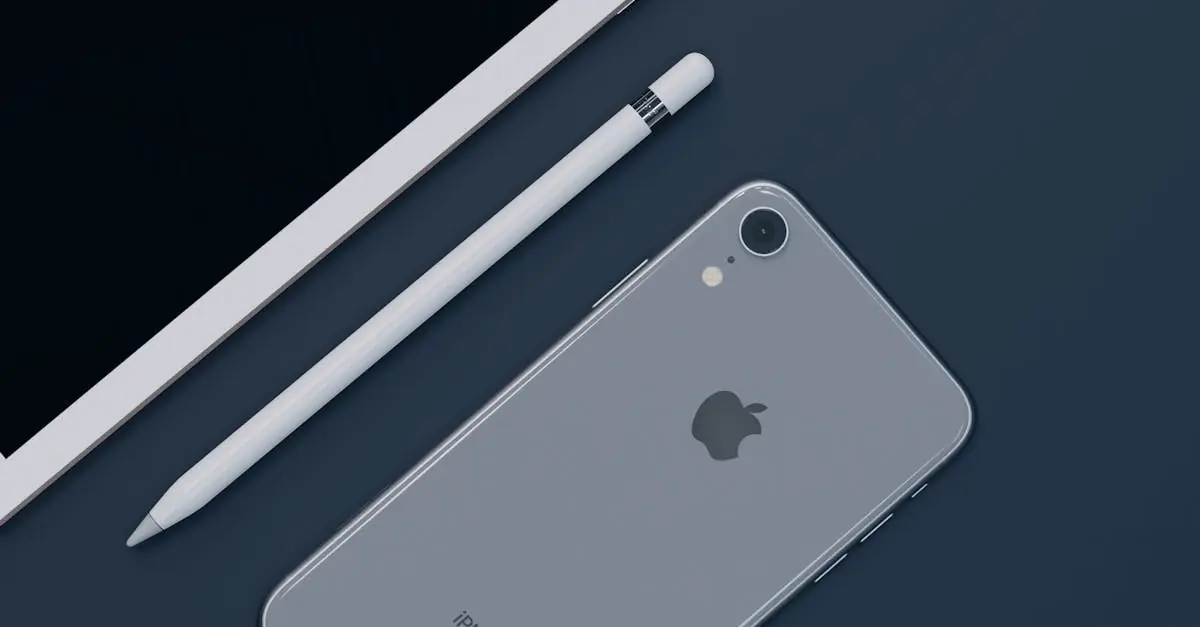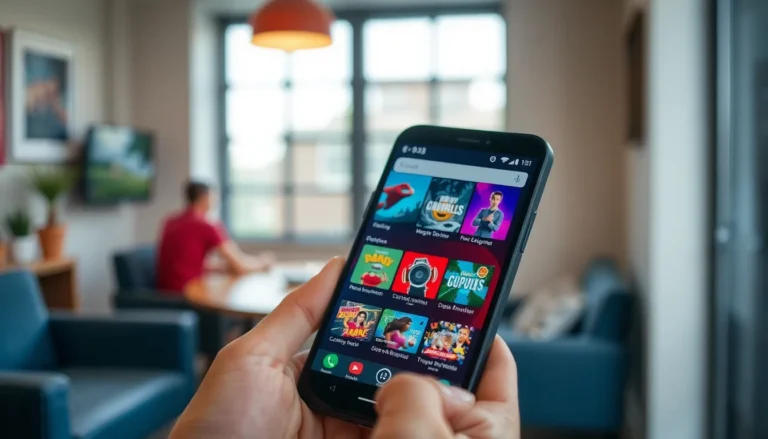When it comes to smartphones, the iPhone 5s might feel like a vintage classic, much like that favorite sweater from college. But as 5G networks roll out faster than a kid on a sugar rush, many are left wondering: can this oldie but goodie keep up with the times?
The iPhone 5s, while a beloved device in its day, lacks the necessary hardware to tap into the lightning-fast world of 5G. It’s like trying to fit a square peg in a round hole—no matter how hard you try, it just won’t work. So, if you’re dreaming of streaming movies in ultra-high definition while on the go, it might be time to consider an upgrade. After all, who wants to be stuck in the slow lane when 5G is just around the corner?
Table of Contents
ToggleOverview of iPhone 5S
The iPhone 5s, released in 2013, remains a significant device in Apple’s lineup. Despite being a popular choice, it lacks compatibility with 5G networks.
Specifications and Features
The iPhone 5s features a 4-inch Retina display and is powered by the A7 chip. It offers options for 16GB, 32GB, or 64GB of storage. A dual-core processor supports multitasking, while an 8-megapixel rear camera captures high-quality images. Touch ID technology enhances security by allowing users to unlock their phones with a fingerprint. The device runs iOS 7 at launch and can be updated to iOS 12.4.9, but it does not support 5G functionality.
Historical Context of iPhone 5S
Launched in September 2013, the iPhone 5s marked a pivotal moment in smartphone evolution. It introduced Touch ID, setting a trend for biometric security in future models. Released alongside the iPhone 5c, the 5s positioned itself as the flagship device, emphasizing premium materials and advanced features. Its design influenced later models, showcasing Apple’s commitment to innovation. While it serves as a nostalgic piece of technology, it cannot accommodate newer features like 5G connectivity.
Understanding 5G Technology
5G technology represents the next generation of mobile networks, designed to deliver faster data speeds and more reliable connections. It enables advanced applications such as augmented reality, smart cities, and enhanced mobile broadband experiences.
What Is 5G?
5G is the fifth generation of wireless technology. This generation offers significantly higher speeds than its predecessors, with download speeds potentially exceeding 10 Gbps. Enhanced capacity allows for greater connectivity, accommodating a larger number of devices simultaneously. Low latency improves the responsiveness of applications, enhancing user experiences in real-time activities like gaming and video conferencing.
Differences Between 4G and 5G
4G technology provides maximum download speeds around 100 Mbps under optimal conditions. In contrast, 5G pushes that limit significantly, targeting speeds exceeding 10 Gbps. User experiences also differ; 4G networks often struggle in crowded areas, while 5G handles dense connections more efficiently. Enhanced features in 5G include massive machine-type communications, supporting IoT devices more effectively than 4G. Overall, 5G’s reduced latency complements its speed, catering to the demanding needs of modern applications.
Is iPhone 5S 5G Compatible?
The iPhone 5s does not support 5G technology. Users seeking high-speed data and modern applications must consider this limitation when evaluating their device.
Technical Limitations of iPhone 5S
The iPhone 5s features a 4-inch Retina display and the A7 chip, yet lacks the infrastructure for 5G connectivity. It operates on 4G LTE networks, with maximum download speeds significantly lower than 5G standards. Dual-core processing capabilities restrict it from efficiently handling the increased demands of 5G applications. Existing hardware cannot accommodate the latest advancements, leaving the device unable to connect to 5G networks. Upgrading to newer models provides the benefits of enhanced performance and compatibility with evolving technologies.
User Experiences and Reports
Users frequently express frustration with the iPhone 5s during network upgrades. They note slower speeds when compared to newer devices capable of utilizing 5G. Many report that streaming and gaming suffer due to inadequate connectivity options. Those who still rely on the iPhone 5s find themselves unable to test new applications relying on 5G networks. Feedback highlights a growing need for better smartphone technology as consumers seek higher performance and enhanced user experiences.
Alternative Options for 5G
Users eager to experience 5G technology must look beyond the iPhone 5s. Upgrading to a 5G-compatible device becomes essential for enjoying the advanced features and speeds that 5G offers.
Upgrading to a 5G-Compatible Device
Transitioning to a newer phone enhances the user experience significantly. Various models available in the market support 5G connectivity, providing access to faster download speeds and improved streaming quality. Many brands now offer budget-friendly options that include essential features like high-resolution cameras and long battery life. Evaluating personal needs can help pinpoint the right device. Prioritizing performance over age allows users to avoid frustration and gain future-proof capabilities.
Recommended 5G Phones in 2023
Numerous 5G phones have gained popularity in 2023. Apple’s iPhone 14 series stands out with state-of-the-art features and enhanced processing power. Samsung’s Galaxy S23 lineup offers remarkable camera systems and display quality. Google’s Pixel 7 excels in software integration and photography. Each of these options accommodates various budgets and preferences. Researching available models helps consumers make informed decisions suited to their needs.
The iPhone 5s, while a beloved device in its time, cannot support the advancements of 5G technology. Users seeking to leverage the benefits of faster speeds and enhanced connectivity will need to consider upgrading to a more modern smartphone. With a range of 5G-compatible options available in 2023, transitioning to a newer model can significantly improve the user experience. Staying connected in today’s fast-paced digital world requires devices that can keep up with evolving technology. For those still using the iPhone 5s, embracing an upgrade is essential to fully enjoy the capabilities that 5G has to offer.




